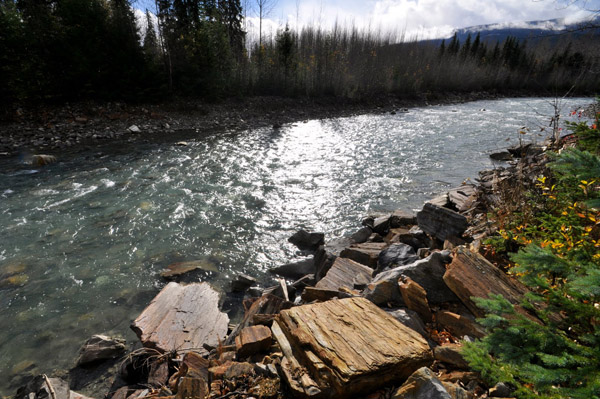Tributaries take center stage
Friday morning we departed Valemount for Prince George, a drive of about 300km. Halfway through the journey through the Rocky Mountain Trench, our surroundings quickly changed from rugged foothills to rolling plains. Our good luck with the weather has continued – we’ve only been rained out of one site so far! But of course we couldn’t cover this much distance without collecting a few samples…

We are particularly interested in more carefully defining the source of a very unique radioisotope signature we measured in our samples from the headwaters last summer. We found strontium isotope values (87Sr/86Sr) indicative of very old bedrock. The Rocky Mountains are an old terrain, however this value was so extreme (“radiogenic,” meaning a long time has passed during which 87Sr has been produced from the decay of 87Rb), we want to determine whether its source is widespread in this area or can be traced to a particular watershed. So we stopped at five small tributaries during our drive for “quick stations,” where we collected samples only for strontium isotopes and nutrients. We hope that this more highly resolved picture of the subdrainage basins of the upper reaches will tell us more about how the Fraser acquires its chemical identity further downstream.
We are now spending a few days in Prince George, which will serve as our base for a number of sampling sites around the first big bend in the Fraser’s path as it breaks out of the mountains and begins its southward flow. The highway does not follow the river in this area, so we are testing our vehicle’s SUV status on long hauls over dirt roads! We have also accumulated large volumes of water for filtration, which will keep us busy for the next day or two…
